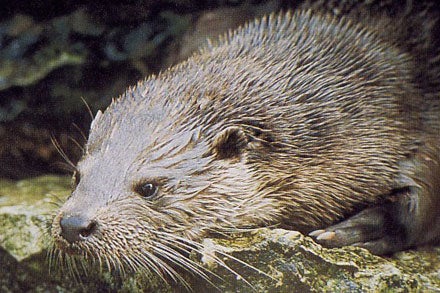The welcome return of the otter to many of our rivers, as demonstrated by the results of the most recent survey of England, is a great success story for conservation. However, increasing otter numbers means increasing interactions with man and a consequence of this is the rehabilitation of injured and orphaned otters. The RSPCA cares for many wild animals each year, over 20,000 pass through our four wildlife centres alone. The legal provision for doing so comes under Section 10 of the Wildlife and Countryside Act 1981, which allows for an animal to be taken into care with the purpose of tending and releasing it, or to euthanase it if there was no reasonable chance of recovery. Of these, otters make up a very small percentage, with between 10 and 20 animals passing through our hospitals a year. These animals fall into two types: -Injured adults Injured adults Orphaned cubs When it comes to release sites, the RSPCA works with The Wildlife Trusts (WT) and the Environment Agency (EA) to find suitable sites in the catchment that the cub was found. This is in agreement with the Bio-diversity Steering Group for otters. In this way, the cubs can be considered as dispersing young and so they may not stay where they are released, but then neither may their free-living peers. Like the adults, all the cubs are micro-chipped and those doing post-mortems of otters for the EA know to look for these chips when examining carcasses. Our hospital staff and other vets also know to look, should an otter be brought in to them injured. Rehabilitated orphaned cubs used to be used for restocking programmes in Yorkshire and elsewhere. As a result, there is detailed information available showing that these otters survive after release and go onto to breed. However, all these releases took place when otter densities in these areas were low. As many of the cubs released through the RSPCA are released into areas where there is a good population of otters, the data from previous releases may not be applicable in this situation. More post release monitoring is required, but the problem is finding a method that will not affect the welfare of the otter, but will give us the information we need. What To Do if You Find An Injured Otter Observe the animal to ascertain that it is injured. Try to assess the severity, by the way it moves, if it can move. Otters are occasionally seen in daylight and so this should not be taken to mean that the animal is in distress. If you can approach the animal without it either trying to fight or escape, then it probably needs attention. Approach it with caution. Otters are dangerous animals, even more so when injured. Try to contain the animal if you can. An overturned plastic dustbin can be useful to trap the otter. But if it escapes, let it go. You can cause more stress by trying to chase the otter, especially if it is injured. Phone the RSPCA on 08705 555 999, or your local wildlife centre or vet, if he/she is willing to come out. Phone the WT or EA and report it to them. If the casualty is a lactating female, search the surrounding area for cubs. Cubs will start to come above ground at around 10 weeks old; listen for calls. The WT may also want to do this. Make an exact note of where you found the animal it and any other details that you may think are relevant. Orphaned Cubs Observe the cub. If it is quiet and sleeping, the answer is probably no. Make a note of the position and return later to see if there is any change. If the cub is in distress, and whistling and calling, you should leave it a while to see if the mother returns. If the cub is in immediate danger, such as in the road, or in the water then you will probably have to remove it immediately. Phone the RSPCA on 08705 555 999, or your local wildlife centre or vet, if he/she is willing to come out. Phone the WT or EA and report it to them. If the casualty is an orphan, look around the surrounding area for other cubs, as otters usually have two cubs, sometimes more. Make an exact note of where you found the animal and any other details that you may think are relevant. Do not try and rear the cub yourself. It can be very tempting, but otters need to be kept with other otters and a hand-reared cub is often too tame to be released. Handling If the animal is an adult, test to see if it is still conscious and if it could be dangerous. If it is conscious, it will probably be unable to move, so cover it with a blanket and transfer it to a suitable cage for transporting. Thick gloves will be useful in case the animal tries to bite through the blanket. If the animal is trapped, you may require a grasper to restrain it, so it may be removed safely (however no such case has yet been recorded). If the animal is not injured, release it immediately, close to where it was trapped, but away from potential danger such as roads. Otters have been known to be trapped in box traps set for mink or feral cats and in empty ponds or old cellars. |
Welcome!Log into your account











